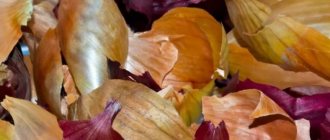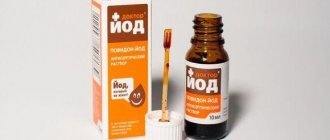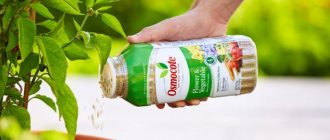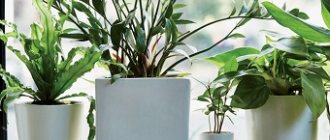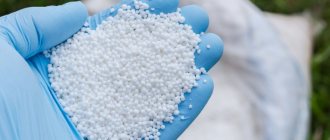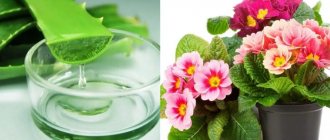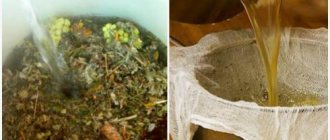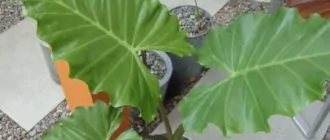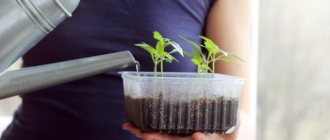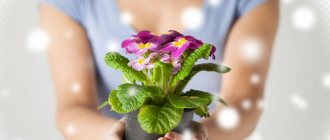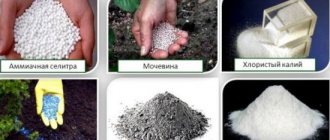Why use for home flowers?
Its valuable properties have been known for a long time. My grandmother also said: “Put down the husks and reap the harvest!” Both she and the infusion prepared from the onion “clothing” not only affect the health of the plant, but also the yield. And for indoor flowers - both for budding and flowering time.
The infusion will help get rid of spider mites, whiteflies and aphids on indoor plants . In addition, it is a free, environmentally friendly and safe fertilizer.
It is especially useful to use a decoction of husks in winter. It will help indoor plants avoid vitamin deficiency and is good for preventing root rot. The decoction also serves as an immunostimulant. If your indoor plant has not pleased you with flowering for a long time, feed it with this potion. And the effect won’t take long!
Onion peels contain many useful substances and microelements:
- carotene;
- phytoncides;
- B vitamins;
- ascorbic acid and other useful microelements.
Advantages and disadvantages
A decoction of onion “dress” has a good effect on plant roots, has an anti-inflammatory and restorative effect, helps the plant when it would seem that all methods have been tried and all actions have been taken. It strengthens and accelerates the growth of the root system. Stimulates the plant for rapid growth and lush flowering.
Along with obvious advantages, there are also disadvantages to this feeding method. More precisely, you need to use the husk with caution . Use the decoction strictly in diluted form, otherwise you can burn the roots. And most importantly, the peel must come from a healthy onion. If the fetus is sick, then its shell could become infected with various diseases.
What are the benefits of onion peels for plants?
Many useful substances and different groups of vitamins, including nicotinic acid, are transferred into prepared infusions and decoctions. And, of course, phytoncides. The specific benefits are as follows:
- Carotene helps the stability of plant immunity. Its antioxidant role increases endurance in the face of pathogenic fungi and pathogenic microflora.
- Phytoncides disinfect soil that may contain fungal spores and dangerous pathogens. However, when boiled, they can evaporate, so it is more useful to prepare infusions by pouring hot water over the husks.
- Vitamin B1 reacts with phosphoric acid. The result is carboxylase, an enzyme necessary for converting carbon into plant-nutrient compounds.
- Nicotinic acid provides effective assistance in the absorption of oxygen and nitrogen, in reactions involving sulfur. When there is a lack of lighting, its role is irreplaceable so that the plants continue to build up their root mass and do not grow weaker.
Video:
Getting rid of pests
Indoor vegetation can be threatened by pests accidentally brought into the house. Spider mites are very secretive creatures; due to their small size, their presence can only be suspected by the thinnest cobwebs entwining flowers. But they do a lot of harm, damaging the leaves.
Thrips are generally impossible to see, but they also leave black dots and thin stripes on the leaves. Aphids secrete a sticky secretion on which sooty fungus multiplies. To destroy these small pests, it is enough to prepare an infusion for 3 days by soaking a liter jar of onion peels in 2 liters of water.
Photo: https://build-experts.ru/wp-content/uploads/2019/05/14.jpg
When the infusion ends, add liquid soap to the strained liquid for adhesion and add water to double the volume. The upper part of the leaves is wiped with this solution. It is then sprayed onto the lower parts of the leaf blades, where pests like to hide.
Fertilizer and prevention
When indoor plants are rapidly losing their decorative properties, you need to save them with a decoction of onion peels. Weakened flowers will be very happy with this feeding. After boiling 1.5 liters of water, you need to throw a handful of husks into the boiling water and boil for another 5 minutes. Removed from the heat, the broth is left to cool and infuse for 2 hours.
Experienced flower growers spray the leaves and stems with this decoction every month, and always the top layer of soil in pots. The decoction acts as an antiseptic and at the same time enriches the soil with the microelements necessary for flowers. But we must not forget that during storage the decoction becomes unusable. It must be prepared fresh before each processing.
Nutritional supplement
Onion dressings will serve not only for decoctions. As a disinfectant component, they are added to soil mixtures for replanting indoor plants. In this way, you can further increase flower immunity. And for lush flowering and healthy looking greenery, it is useful to fertilize with this decoction.
Photo: https://img.day.az/2019/10/25/800×550/1571936968_9198216a9ae5.jpg
It increases the regenerative abilities of indoor plants. And it is prepared very simply in a galvanized bucket, into which 4 measured handfuls of husks are thrown and water is poured to the top. This bucket is brought to a boil over the fire, and then infused for another day. The filtered broth is diluted.
For watering, take 1.5 liters of the resulting concentrate per ten-liter bucket of clean water. Onion fertilizers are especially beneficial for plants that are put out of rooms onto balconies in the summer or used to decorate loggias, subjecting them to the test of a polluted urban atmosphere. Onion fertilizer increases their resistance, immunity and ability to recover.
The husk is available all year round. It allows you to get great benefits from virtually nothing, since free waste is put to use. Solutions prepared from it are completely safe for indoor spraying, but provide disease prevention and pest control. However, it is worth remembering the exceptions and not watering with infusions that react negatively to it.
How to water, spray and fertilize the soil?
There are many recipes for preparing healthy solutions from onion peels. We present to you the simplest and easiest to prepare.
- Brew onion peels (1 tbsp. boiling water per handful of peels). Cool and add 1 tsp. liquid soap. Spray the plants with the resulting product every 5-7 days. This medicine will rid plants of whiteflies and aphids.
- Brew a handful of onion peels with one glass of boiling water. Dilute the resulting solution in 5 liters of plain, settled water. Water once a week. This is a very good fertilizer during flowering.
- Aphids are enemy number one not only for garden plants, but also for indoor flowers. To combat it, you can use an infusion of onion peels. For 10 liters of water, use 200 grams of husk, boil and leave for 24 hours. The resulting concentrated infusion is sprayed onto the affected plants. Repeat the procedure after 14 days.
- Well-dried husks can also be used in this form. When replanting a plant, add a pinch to the soil. It will help the flower to get used to its new place better. At the same time, it will feed him.
- A decoction of the husks will help houseplants survive the winter. 1 liter pour 2 liters of boiled water. As soon as the brew has cooled and acquired a rich amber-brown color, the infusion is ready for watering. Feed your home plantings with this mixture once a week.
Onion peel infusion against pests
Thrips, aphids, mites and other pests often appear on indoor plants.
Thrips cannot be seen with the naked eye; only black dots or stripes are visible on the foliage. Pests secrete a characteristic sticky liquid, which causes sooty fungus to develop over time.
Spider mites weave flowers with barely noticeable webs.
To destroy pests, an infusion is used, which is prepared within 3 days from a liter jar of husks and 2 liters of water. After preparation, the liquid is decanted, liquid soap is added and diluted with water 2 times.
First, the leaves of the plants are wiped with the resulting composition, and then sprayed in such a way that the substance necessarily gets on the inside of the foliage.
What are the mistakes?
A decoction of onion peels is the most accessible and, most importantly, cheap fertilizer for indoor plants.
It should be used immediately after cooling, when the concentration of substances in the decoction is maximum.
Be sure to dilute with water before use! Remember that the solution should never be used in its pure form.
Make sure that when drying, midges do not infest the husks and they do not begin to rot. Therefore, before brewing, carefully examine it, take only healthy skin. It should be stored in cloth bags that allow air to pass through well.
The examples given are not a panacea for all diseases of indoor plants. But they work! Try it - you have nothing to lose! And we promise you that the plants will thank you with lush flowering and magnificent appearance!
Onion peels for indoor plants
Popular rumor ascribes simply miraculous properties to infusions of onion dressings. The vitamin-antioxidant richness of its composition is complemented by the content of microelements that are undoubtedly necessary for green friends from the windowsill. Along with food, indoor plants receive disinfecting phytoncides that kill all pathogens.
The husk actively works when watering and spraying against pests. However, when using it, you need to know the specifics of use. The fact is that not all plants respond gratefully to onion additives when watered. Despite all the advantages and diversity of the set of necessary microelements, you cannot water the following with a decoction of the husk:
- Both types of indoor agave (aloe).
- Ficuses.
- The Crassulaceae family, including Kalanchoe.
- Cacti.
- Succulents.
These fertilizers can even harm plants and will inhibit their growth. For the rest, decoctions and infusions will really benefit.
Benefits of onion peels for seedlings: advantages
Onion peels
Fertilizing with onion peels is effective for almost all crops grown in the garden. It is most beneficial for peppers, potatoes, cucumbers and tomatoes. After using it, crops grow better and also give a bountiful harvest. In addition, onion peels for seedlings can also be used for simple indoor flowers. It also strengthens them and allows them to grow better.
You can list many useful properties of this product, but the main ones are the following:
- First of all, husks are the best assistant in the fight against various types of fungi, as well as bacteria and rot. Using a decoction or infusion prevents harmful bacteria from developing and fungi from growing. The husk also disinfects the leaves.
- Improves the general condition of the root system. Therefore, the plant strengthens and develops. Onion peels prevent seedlings from rotting. It also prevents the early decay of chlorophyll, which takes part in photosynthesis.
- Plant immunity is supported. Its protective forces are activated, and it is able to actively resist adverse external factors. In addition, the husk helps convert nitrogen and sulfur, and also saturates plants with phosphorus.
Using onion peels as fertilizer for the garden
Experienced gardeners know about the enormous benefits of onion peels. Above we have already discussed the main ways to use this product on your own personal plot.
Using a decoction for seedlings
The first method involves using onion peels as fertilizer when planting seedlings in the soil . It can be laid directly into the ground, but in small quantities. This protection will protect the young culture from many diseases. Vegetable crops become many times more resistant to pests and diseases. Against this background, productivity increases.
To use this method, you should prepare a decoction based on onion peels, which makes it possible to quickly save the yellowed foliage of zucchini and cucumbers. The recipe for this decoction is extremely simple. It is enough to prepare 3-4 cups of onion peels; they are first dried and filled with 10 liters of water.
If you add the dry composition to water, then you should bring it to a full boil, and then remove it from the window so that the consistency completely cools and can sit for some time. Taking into account the low concentration of the composition, this fertilizer for onion peel flowers is considered the most preferable.
Onion peels for seedlings to protect against pests and diseases: use, recipe
Preparing a decoction of onion peels
Onion peels for seedlings are often used as a remedy for pests and diseases. Thanks to its use, you can get rid of insects for a long time.
There are several effective recipes to combat pests:
- Pour one kilogram of husk with three liters of boiling water. The finished mixture cannot be used immediately. It takes her a day to brew. This product is very helpful in dealing with blackleg.
- Onions effectively fight against aphids and spider mites on plants. To do this, just add laundry soap to the solution.
- Plants can be processed. This allows them to increase their resistance to infections. The procedure is carried out five to six days after planting in the ground. This event also helps prevent the development of rot.
By the way, the solution not only helps fight pests and diseases. It can also act as a growth promoter and adaptogen.
Onion peels from infections and pests
For aphids, caterpillars, moths, spider mites, cabbage butterflies and weevils, make a remedy according to the following recipe:
- Onion peels - liter jar.
- Boiling water – 1 liter.
Pour, cover with a lid, leave for 5 days. Then strain, dilute the resulting infusion with water in a ratio of 1: 2, add finely grated laundry soap, give it time to completely dissolve and water with the resulting planting agent for at least 3 days in a row.
Remedy for blackleg
- Husk – 2 handfuls
- Boiling water – 1 liter
Leave for 24 hours, strain, and apply as a spray.
Against bacteriosis of cabbage and radish
The composition is the same as for the black leg. At the first sign of yellowing of the leaves, treat the entire plant, from crown to root.
Against bacterial cancer
A tomato disease that can destroy the entire crop. Spray the green parts of plants with onion infusion or decoction after flowering until the first ripe fruits appear. Unlike chemical means of combating pathologies, spraying husk solutions is absolutely harmless.
The specific substances contained in onion peels will repel not only insects such as the Colorado potato beetle, codling moth, copperhead, click beetles, wireworms, slugs and cruciferous flea beetle from crops grown in gardens. As well as some rodents (moles and voles) and birds (thrushes, crows, magpies).
Onion peels for feeding seedlings: recipe
To increase productivity, onion peels are also used for seedlings. There is a recipe for effective onion feeding. To prepare, you will need two to four liters of boiling water, as well as 600 grams of husks. The liquid must be settled. She needs 40-50 hours.
For each bush you will need 400 ml of infusion. Gradually the amount increases to one liter as the plant grows.
The effect of fertilizing is quite quick. After just a few days of use, the foliage will acquire a brighter and richer color.
